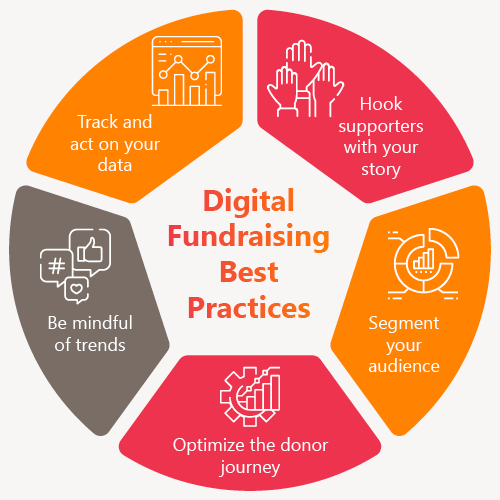Online Fundraising: Effective Digital Campaigns for Nonprofit Success
Online Fundraising: Effective Digital Campaigns for Nonprofit Success
Blog Article
The Function of Area Interaction in Nonprofit Fundraising: Structure Lasting Relationships for Lasting Support
Neighborhood interaction is increasingly identified as an essential element of successful not-for-profit fundraising. The methods and strategies used to involve neighborhoods vary widely, raising essential questions regarding effectiveness and effect.
Recognizing Neighborhood Involvement
Area involvement is a vital element of successful not-for-profit fundraising initiatives. Nonprofits have to determine vital stakeholders-- such as area members, local services, and various other companies-- to produce reliable interaction strategies.
Reliable community engagement is asserted on energetic listening and responsiveness to the demands and rate of interests of the community. This process involves obtaining feedback, understanding area characteristics, and making certain that the organization's mission lines up with local concerns. Involving the neighborhood can take different types, including public conferences, volunteer possibilities, and partnership initiatives, each designed to encourage involvement and investment in the organization's objectives.
Additionally, neighborhood involvement must be come close to as an ongoing discussion instead of a single initiative. By fostering a comprehensive atmosphere where area voices are listened to and valued, nonprofits can develop a solid structure for future fundraising ventures. Eventually, a deep understanding of neighborhood involvement encourages organizations to create authentic links that enhance their overall effectiveness and sustainability.
Advantages of Solid Relationships
Strong partnerships formed via community engagement return many advantages for nonprofit fundraising efforts. Primarily, these relationships foster trust fund and credibility, necessary components in motivating contributors to add. When prospective supporters see a nonprofit proactively involved in their area, they are more probable to think in its mission and impact.

Additionally, these relationships promote efficient interaction. Nonprofits can utilize their connections to share stories of effect, updates, and requires, ensuring that advocates remain informed and engaged. This open line of interaction not just reinforces bonds however also urges referral promotion, expanding the nonprofit's reach.
Lastly, strong community connections can attract new partners and sponsors. Individuals and businesses are extra inclined to straighten with organizations that show purposeful neighborhood involvement, providing additional sources and assistance that can considerably enhance fundraising capacities. Therefore, growing robust relationships with neighborhood engagement is important to a nonprofit's long-term fundraising success.
Approaches for Effective Interaction
Exactly how can nonprofits efficiently involve their areas to improve fundraising initiatives? Normal updates, engaging content, and calls-to-action can galvanize neighborhood interest and engagement.
Second, holding area occasions, such as workshops, volunteer chances, or fundraising drives, promotes in person interaction, enabling nonprofits to display their influence and efforts. These occasions not only increase funds yet also grow partnerships and enable area members to engage directly with the cause.
Third, carrying out tailored interaction techniques can improve interaction. Tailoring messages to particular donor sections based upon passions and previous payments fosters a sense of belonging and financial investment in the company's goal.
Last but not least, producing partnerships with neighborhood services and community leaders can intensify outreach initiatives. Joint campaigns can boost visibility and reliability, demonstrating a cumulative dedication to the neighborhood's well-being. By incorporating these methods, nonprofits can build long lasting partnerships that enhance fundraising efforts and drive lasting support.
Gauging Interaction Success
While involving the area is critical for successful not-for-profit fundraising, determining the efficiency of these involvement efforts is equally vital. Developing clear metrics allows organizations to assess how well they are linking with their audience and accomplishing their fundraising objectives. Trick performance indicators (KPIs) such as fundraising consultant benefactor retention rates, volunteer participation levels, and interaction on social networks systems provide tangible information for analysis.

Consistently examining these metrics enables organizations to pivot their approaches when necessary, making certain that neighborhood involvement remains straightened with their total objective. In addition, sharing these results with stakeholders promotes openness and develops trust, encouraging additional community participation. Ultimately, a durable dimension structure not only notifies future fundraising initiatives however likewise strengthens the connection between the nonprofit and its fans, laying the foundation for sustainable success.
Study in Neighborhood Effect
Various case researches highlight the extensive effect that area involvement can have on not-for-profit fundraising success. One significant example is the "Food for Idea" campaign, where a local food bank partnered with companies and schools to host community dinners. These occasions not just elevated funds but also cultivated a sense of belonging among participants, considerably increasing benefactor retention prices.
An additional compelling case is the "Eco-friendly Spaces Task," which entailed local citizens in the revitalization of city parks. This initiative not just gathered financial backing from neighborhood services yet also cultivated a volunteer base that contributed to continuous maintenance and programs. The feeling of ownership and satisfaction amongst neighborhood members equated into sustained contributions.
In the realm of arts, the "Art for All" campaign efficiently involved neighborhood artists and clients to produce joint art setups, resulting in increased exposure and donations for a regional arts not-for-profit.
These instances highlight that when nonprofits focus on neighborhood involvement, they can create long lasting connections that enhance fundraising initiatives, making sure lasting assistance and promoting a vibrant community society. Such cases show that area interaction is not merely an approach yet a vital column of nonprofit success.
Conclusion
To conclude, neighborhood engagement is important to the success of not-for-profit fundraising initiatives. By promoting strong connections with neighborhood stakeholders, companies improve depend on and trustworthiness, resulting in enhanced donor retention and commitment. Implementing effective engagement approaches and gauging their influence makes certain that nonprofits can adjust and prosper. Ultimately, a robust structure of area assistance not only amplifies fundraising potential yet likewise grows a society of cooperation, crucial for attaining long-term business goals and sustaining meaningful effect.
Nonprofits have to identify crucial stakeholders-- such as area participants, neighborhood organizations, and other companies-- to produce efficient interaction strategies.

In conclusion, area interaction is essential to the success of not-for-profit fundraising initiatives.
Report this page